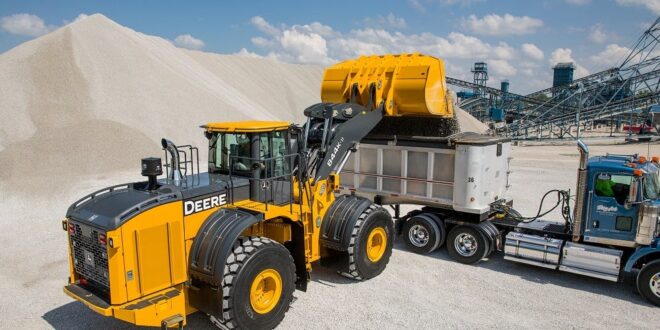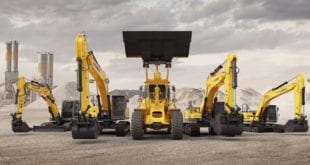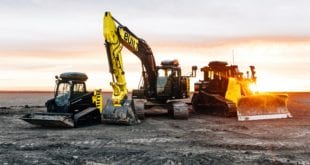Are you a new freelance contractor looking to break into the construction industry? One of the most important machines you’ll use is a front end loader. This machine can clear debris and level out areas fast. Look for an affordable front end loader for sale for your business if you want to make a wise investment.
However, if you’re new to construction machinery, you’ll need to know how to operate your front-end loader safely. To help you, we’ve provided safety measures to consider before you start working on construction sites.
Fully Inspect the Loader Before You Operate It
Safety checks when using your front-end loader are crucial because they ensure the safety of you and your team. These checks can also prevent unnecessary breakdowns while you’re working. Before you switch your front-end loader on, use this list to inspect it:
- Check the oil, air, and fuel filter
- Inspect the tires and rims for cracks
- Look under the machine with a torch for leaks or broken components
- Inspect all greasing points
- Remove dirt clogged around the engine
Once you’ve inspected the outside of the front-end loader, you can switch the machine on and assess its operations. Make sure the arm is moving correctly and ensure that there are no warning lights blinking.
Use a Seatbelt or Safety Bar When Moving
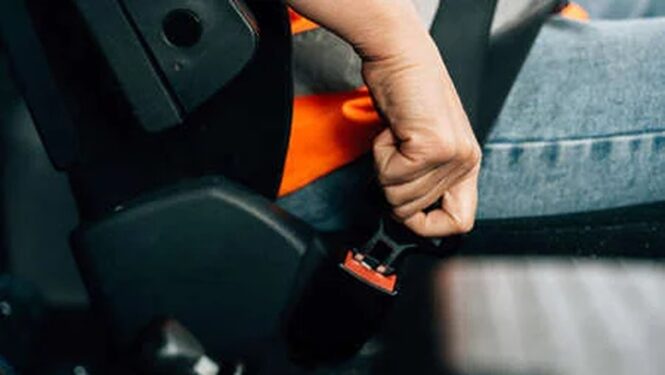
Although you’re moving at slower speeds when operating a front-end loader, it’s still a requirement to wear a seatbelt or a safety bar. Accidents can happen on a construction site, like smacking into another machine or a pile of debris.
You’ll need to wear a seatbelt to prevent you from crashing into the windscreen or hitting the steering wheel in the event of an accident.
Always Distribute Loads Evenly
Construction machines like front-end loaders will have a maximum load capacity. This capacity ensures you don’t overload the machine. Additionally, even if you don’t fill the bucket of the front end loader it’s still required to distribute weight evenly. If there’s too much weight on the one side of your front-end loader it could tip over.
Unevenly distributed weight can also put strain on one of the arms which can cause the machine to break down faster. So, make sure that your load is evenly distributed in the bucket no matter the task.
Operations to Use for High and Low Speeds
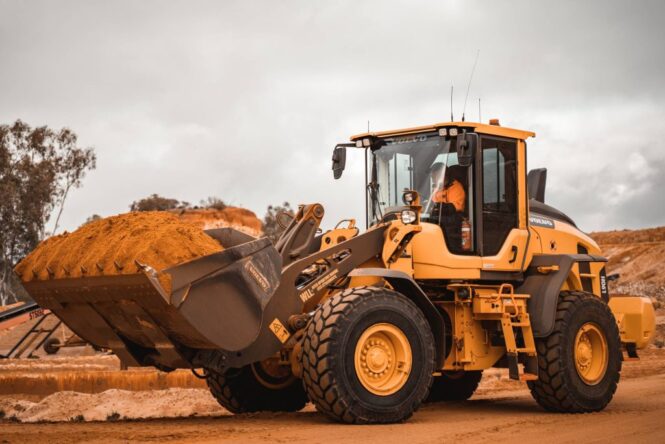
When you’re driving your front-end loader at higher speeds it’s recommended to use front-wheel drive, especially if you’re carrying a heavier load. On the other hand, if you’re traveling at slower speeds, you should use four-wheel drive so you can drive over rugged terrain easily.
Avoid taking sharp turns or emergency breaks when carrying loads because it can cause the machine to break or tip over. Sudden braking can also cause loads to fall out of the bucket.
Always Lift the Bucket Slowly
When you’re working all day on a construction site it’s easy to get frustrated. You may want to work faster so you can get the job done, especially if you’re on a tight schedule. However, operating machines like front-end loaders requires extreme concentration and patience.
Avoid trying to lift the bucket fast because it can damage the hydraulics. You should always lift the bucket slowly when working with dense materials like rock and cement. Also, slow operations prevent debris from falling and injuring you or your crew.
Keep The Bucket Low
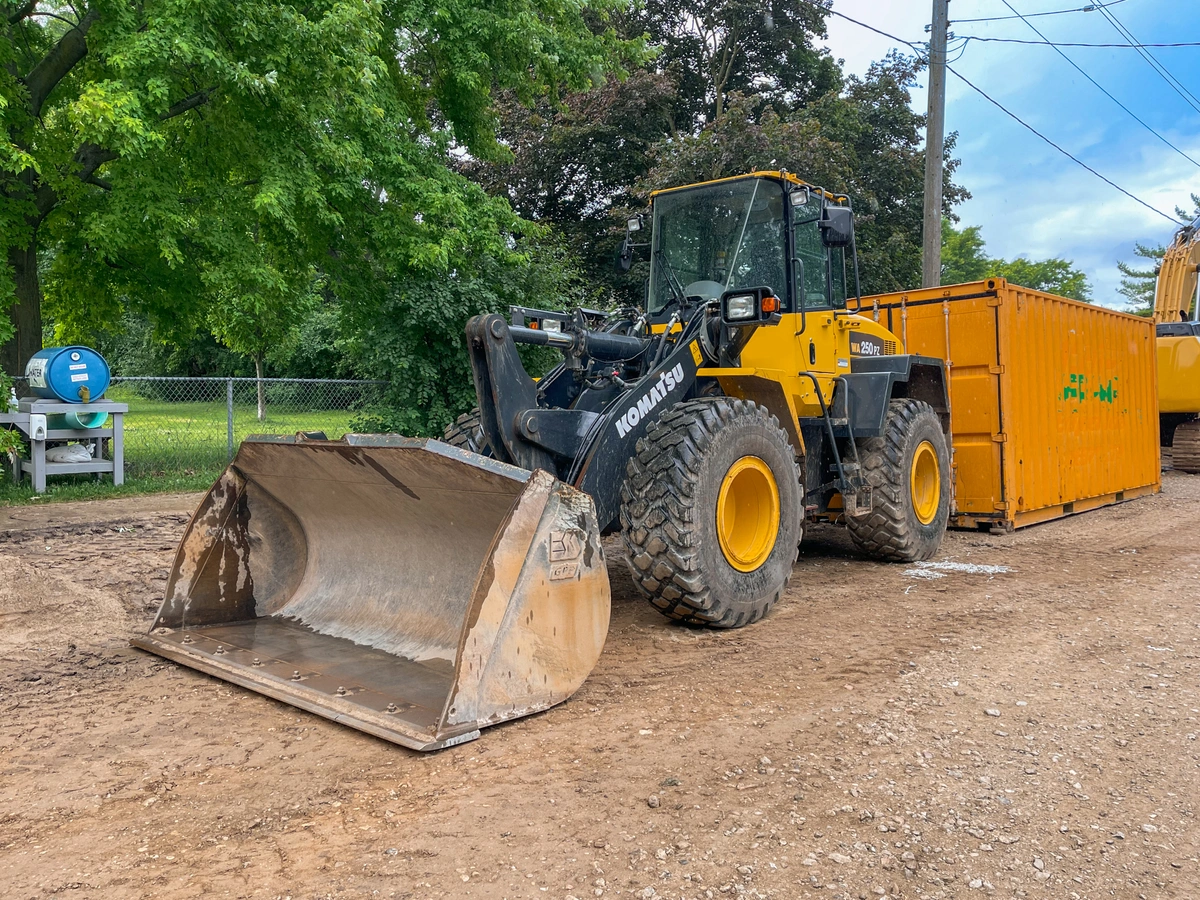
Although you can lift the front-end loader’s bucket, it’s recommended that you always keep it low when transporting materials. If the bucket is lifted higher there’s more risk of debris falling out. Additionally, it may obstruct your view. Keep the bucket as low as possible to the ground and only lift it when you need to pick up rubble or dump materials.
What to Do When Someone Else is Operating the Front End Loader
If you’re the manager on a construction site, you’ll need someone else to operate the front-end loader. You must check Australia’s construction safety laws first to ensure the safety of everyone on site. Make sure the person operating your front-end loader is qualified. Furthermore, everyone on the construction site must wear safety gear such as:
- Hard hats
- Reflective vests
- Safety boots
- Gloves
- Goggles
Everyone should have a site plan to work with to ensure the team knows what’s expected of them including your front-end loader operator. The person operating the machine must be informed of his duties and what he’ll be working on like grading an area or removing rubble.
Implore your operator to report any problems to you if there are any. Lastly, ensure that the site is safe to work on. You can use signs or reflective tape to block off areas you don’t want the front end loader to operate in.
Final Thoughts
A front-end loader is a versatile piece of machinery that can transform how you plan for a construction job. However, it’s important to know how to operate this vehicle to ensure the safety of you and your crew. Use the information in this post to help you get it right from the start.
In conclusion, operating a front-end loader demands diligence and adherence to safety protocols to protect yourself, your team, and the site. Regular inspections, proper load distribution, and cautious operation at varying speeds are vital practices to prevent accidents and equipment damage. Patience is key, especially when lifting heavy loads, as rushing can compromise hydraulic systems and endanger nearby workers.
Additionally, maintaining a low bucket height during transport minimizes the risks of debris falling and obstructing vision. When delegating operations to others, ensure they are qualified and equipped with proper safety gear, adhering to construction site regulations. By prioritizing safety and following these guidelines, you can harness the versatility of a front-end loader effectively, enhancing project efficiency while safeguarding against potential hazards.
 Imagup General Magazine 2024
Imagup General Magazine 2024
